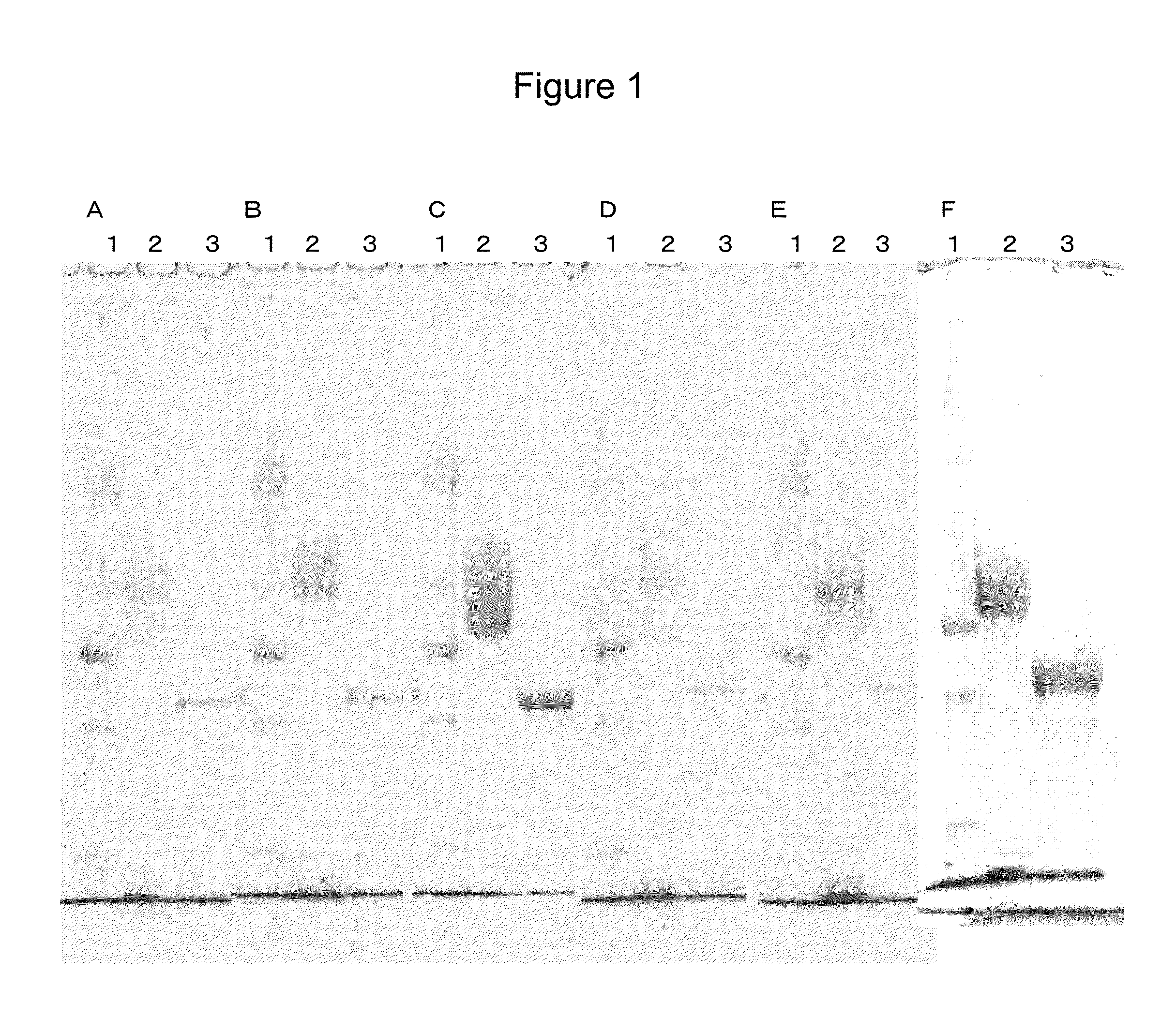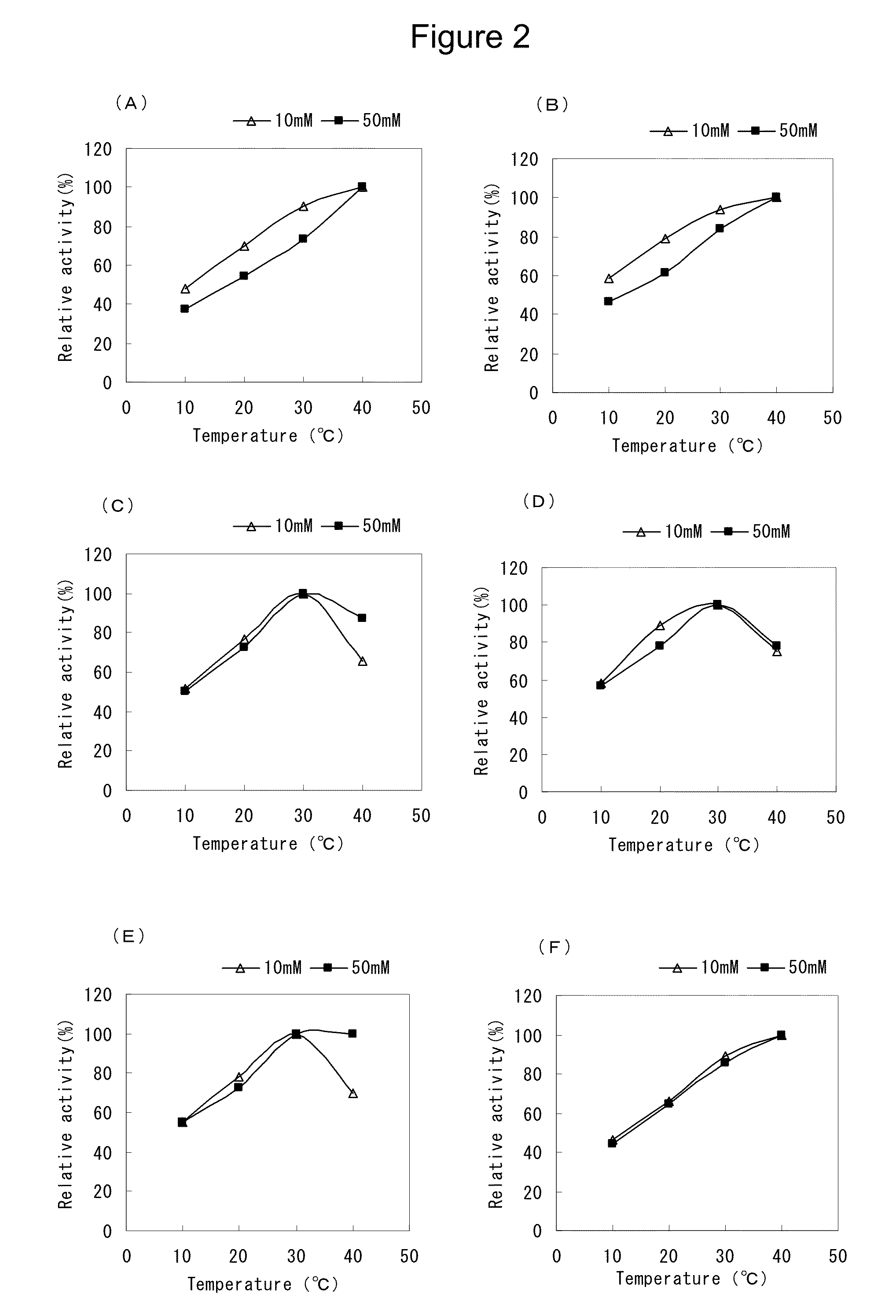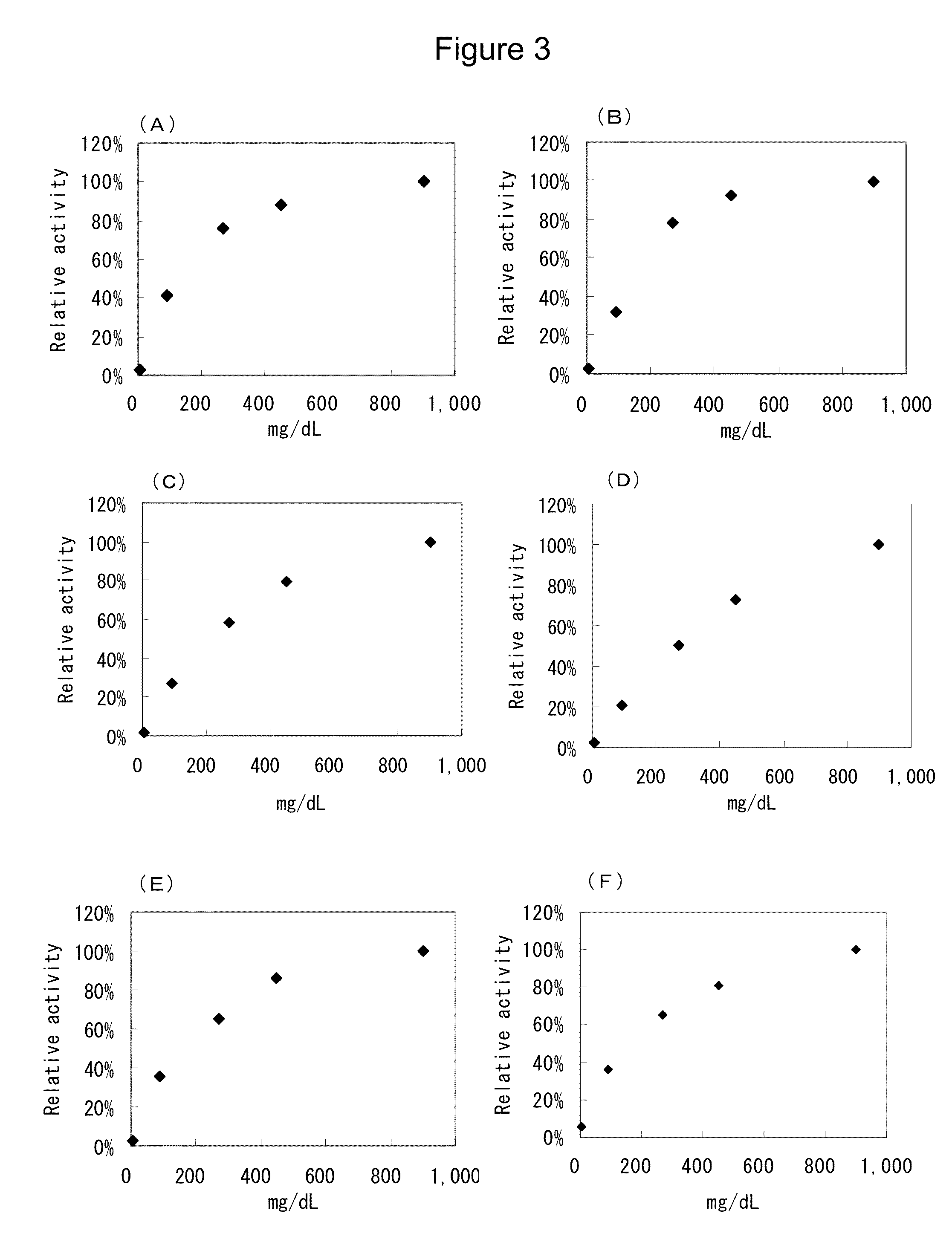Flavin-conjugated glucose dehydrogenase and polynucleotide encoding the same
a technology of glucose dehydrogenase and flavin, which is applied in the field of flavin-conjugated glucose dehydrogenase and polynucleotide encoding the same, and achieves the effects of small fluctuation in activity, good reproducibility and correct measuremen
- Summary
- Abstract
- Description
- Claims
- Application Information
AI Technical Summary
Benefits of technology
Problems solved by technology
Method used
Image
Examples
example 1
Obtaining the Flavin-Conjugated Glucose Dehydrogenase of the Present Invention
(1) Confirmation of the GLD Activity
[0087]GLD-producing bacteria are searched from about 3800 strains in total of those isolated from the natural world and those purchased from a depositary institution of microorganisms (National Institute of Technology and Evaluation: 2-5-8, Kazusa-kamatari, Kisarazu city, Chiba, JAPAN, 292-0818). As a result, The GLD activity has been confirmed in the culture supernatants of Aureobasidium pullulans S20, Aureobasidium pullulans NBRC4464, Kabatiella caulivora NBRC7314, Kabatiella zeae NBRC9664, Cladosporium sp. T799, Cladosporium sp.T806, Cladosporium cladosporioides NBRC4459, Cladosporium funiclosum NBRC6537, Cladosporium oxysporum NBRC32511, and Fusicladium carpophilum NBRC9645.
(2) Pulification of A. pullulans S20-Derived GLD
[0088]500 mL of a liquid medium consisting of 1% (w / v) of glucose (NACALAI TESQUE, INC.), 2% (w / v) of soy flour (Showa Sangyo Co., Ltd.), 0.5% (w / v)...
example 2
Expression of the GLD Derived from A. Aureobasidium pullulans S 20 (ApsGLD) by Eukaryotic Cell
(1) Culture of Fungus Cells
[0091]A liquid medium consisting of 1% (w / v) of glucose (NACALAI TESQUE, INC.), 2% (w / v) of defatted soybean (Showa Sangyo Co., Ltd.), 0.5% (w / v) of corn steep liquor (San-ei Sucrochemical Co., Ltd.), 0.1% (w / v) of magnesium sulfate heptahydrate (NACALAI TESQUE, INC.), and water was adjusted to pH 6.0, 150 mL of it was introduced into a 500 mL Sakaguchi flask, and autoclaved at 121° C. for 20 minutes. To this cooled liquid medium, an Aureobasidium pullulans S20 strain was inoculated, shake-cultured at 15° C. for 90 hours, and then moist fungus cells were collected by means of bleached cloth.
(2) Isolation of the Total RNA
[0092]After 200 mg of the moist fungus cells were frozen at −80° C., 100 μg of the total RNA was extracted using ISOGENII (NIPPON GENE CO., LTD.).
(3) Preparation of a cDNA Library
[0093]A cDNA library was prepared from the total RNA by a reverse tra...
example 3
Expression of GLD Derived from B. Aureobasidium pullulans NBRC4464 Strain (ApnGLD) by Eukaryotic Cell
[0099]The ApnGLD gene was amplified by PCR using the cDNA library of A. pullulans NBRC4464 prepared according to the method described in Example 2 (1) to (3) as a template.
[0100]According to the method described in Example 2 (4), PCR in the first step and the second step, the 5′-RACE method and the 3′-RACE method were performed. Finally, PCR was performed using a primer pair of the following primer-ApnF and primer-ApnR to obtain a DNA fragment containing A. pullulans NBRC4464 strain-derived ApnGLD gene of whole chain length of 1,770 bp shown in SEQ ID NO 3. The amino acid sequences encoded by the gene are shown in SEQ ID NO 4.
[0101]It should be noted that, in the amino acid sequences of SEQ ID NO 4, a signal sequence was predicted by Signal P4.1, and 15 amino acids of positions 1-15 in the amino acid sequences of SEQ ID NO: 4 could be predicted to be the sig...
PUM
| Property | Measurement | Unit |
|---|---|---|
| Temperature | aaaaa | aaaaa |
| Fraction | aaaaa | aaaaa |
| Fraction | aaaaa | aaaaa |
Abstract
Description
Claims
Application Information
 Login to View More
Login to View More - R&D
- Intellectual Property
- Life Sciences
- Materials
- Tech Scout
- Unparalleled Data Quality
- Higher Quality Content
- 60% Fewer Hallucinations
Browse by: Latest US Patents, China's latest patents, Technical Efficacy Thesaurus, Application Domain, Technology Topic, Popular Technical Reports.
© 2025 PatSnap. All rights reserved.Legal|Privacy policy|Modern Slavery Act Transparency Statement|Sitemap|About US| Contact US: help@patsnap.com



